Classical CDs: Mandolins, multiphonics and multiple pianos | reviews, news & interviews
Classical CDs: Mandolins, multiphonics and multiple pianos
Classical CDs: Mandolins, multiphonics and multiple pianos
Classical horn concertos, a Gallic record label celebrated and Seventies pop meets the French baroque

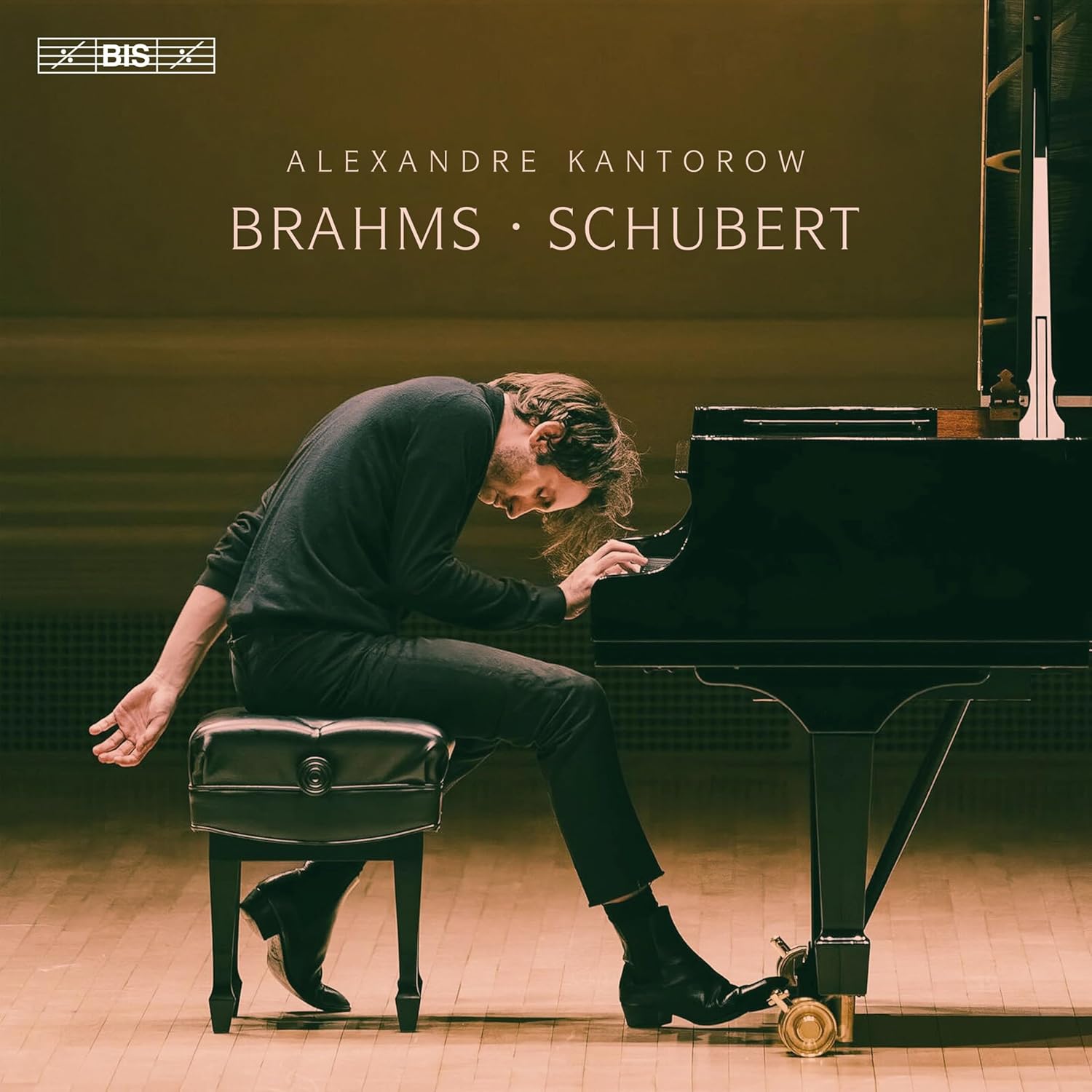 Brahms: Piano Sonata No. 1, Schubert: Wanderer Fantasy Alexandre Kantorow (piano) (BIS)
Brahms: Piano Sonata No. 1, Schubert: Wanderer Fantasy Alexandre Kantorow (piano) (BIS)
I’d previously encountered pianist Alexandre Kantorow via his exuberant set of Saint-Saëns piano concertos, sparky, lovable performances conducted by his father Jean-Jacques. This solo disc contains weightier repertoire but the Kantorow’s elucidatory abilities prevent things ever getting oppressive; if there’s a more accessible reading of Brahms’s Op. 1 Piano Sonata on disc, I’ve not heard it. Questions of technique don’t arise here, and unless you follow with a score it’s easy to forget how physically exhausting this sonata is to play. Take the thunderous opening, Kantorow giving it gleaming orchestral heft, or a similarly imposing scherzo, weighty but not lacking swing. The finale’s helter-skelter closing minutes make you want to cheer, every cross rhythm immaculately placed.
The other big work here is Schubert’s Fantasy in C major, Kantorow prefacing it with five Schubert lieder in Liszt’s transcriptions. Comparing them with the originals is fascinating, Liszt’s additions invariably hitting the mark. Try the subdued ending of “Der Müller und der Bach”, or a warm, verdant take on “Frühlingsglaube”. Then, dive into Schubert’s four-part Fantasy and marvel at how Lisztian much of it sounds, each movement’s opening gesture derived from the song “Der Wanderer”. Kantorow's fireworks in the manic “Presto” left me reeling, and the last movement’s fugal opening is sensational here, every line audible. Play this disc at high volume: your neighbours will thank you.
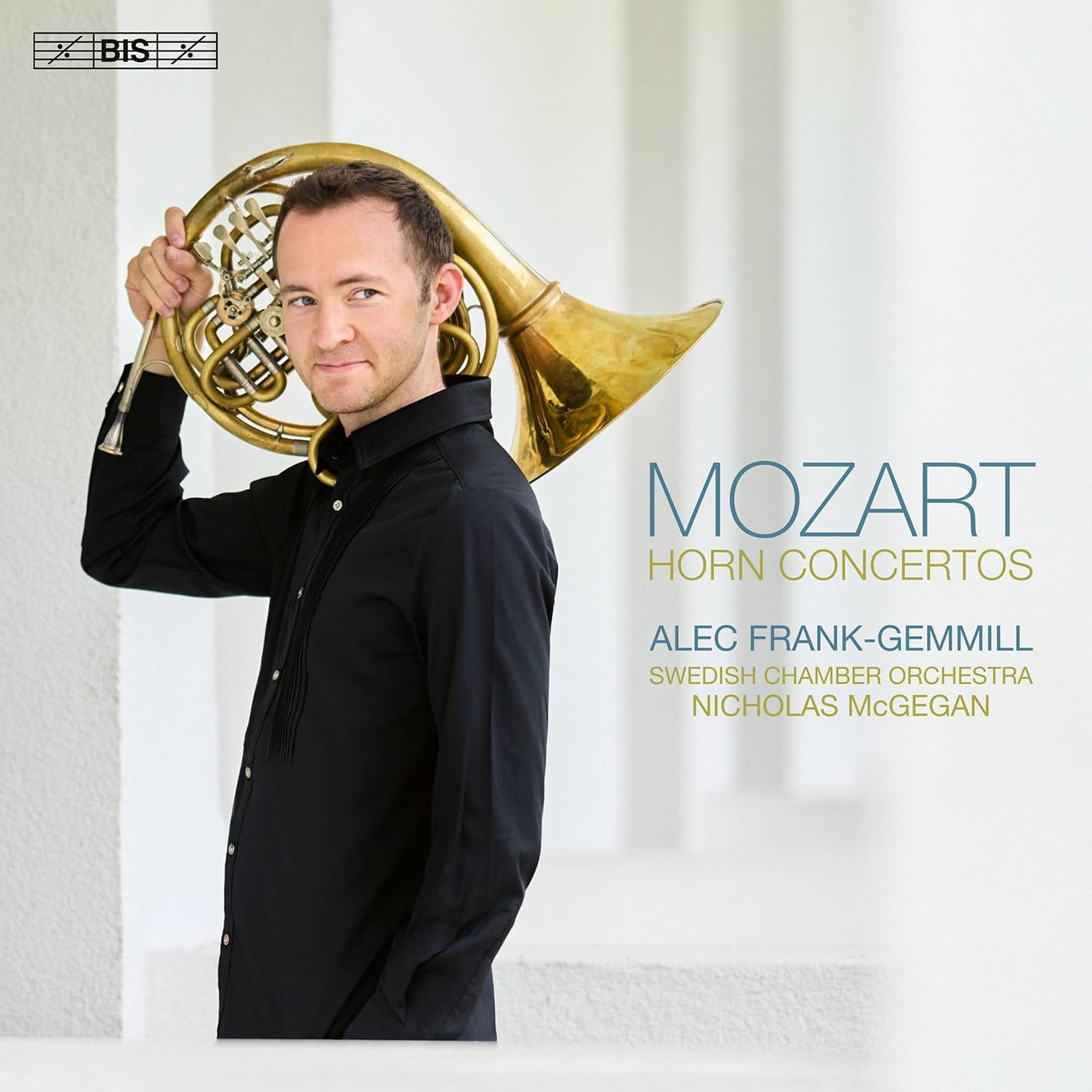 Mozart: Horn Concertos Alec Frank-Gemmill, Swedish Chamber Orchestra/Nicholas McGegan (BIS)
Mozart: Horn Concertos Alec Frank-Gemmill, Swedish Chamber Orchestra/Nicholas McGegan (BIS)
Mozart: Horn Concertos Sibylle Mahni, Brandenburger Symphoniker/Andreas Spering (Prospero)
Two new sets of Mozart’s Horn Concertos, both played on modern valved horns, have appeared within months of each other, so it makes sense to review them together. These are modest, lovable works, their strengths and limitations inseparable from the circumstances surrounding their creation. Mozart composed the concertos between 1783 and 1791 for the Viennese horn player Joseph Leutgeb, the pair close friends despite Mozart’s constant teasing: the manuscript of K412’s last movement famously contains a stream of affectionate, occasionally smutty digs at the soloist. The albums share identical titles, though Alec Frank-Gemmill’s BIS set includes a bonus work, a Concerto No. 0 in E flat. Neatly reconstructed and completed by Stephen Roberts, this two-movement piece stands apart from the others, the solo writing more flamboyant and less vocal. Frank-Gemmill is unfazed by the finale’s demands, its six minutes burbling past with barely a second to catch a breath.
Listen to four established concertos in chronological order and you can hear Mozart responding to Leutgeb’s diminishing physical prowess, the final concerto (K412, still labelled as No. 1) in a lower key and containing longer tutti passages. It’s still difficult to pull off, though, and the rapid semiquaver passage near the close of the “Allegro” suggest that Leutgeb was still a force to be reckoned with. Frank-Gemmill and Roberts have inserted a transcription of the “Adagio” from Mozart’s K211 violin concerto between the two established movements. Though gorgeously played, I’m unconvinced; the solo line doesn’t sound like idiomatic Mozart horn writing and would have been tricky to play on a valveless instrument. Frank-Gemmill does include the original 6/8 finale instead of the better-known Süssmayr completion. The three E flat concertos receive bold, characterful readings, and one hopes that Mozart would have giggled at Frank-Gemmill’s cheekier additions – try K447’s first movement cadenza, taking in multiphonics and a stratospheric high B flat, or a nicely raucous conclusion to K495. The hunting finales are all superb here, each one a mixture of grit and polish. And do sample K417’s brief “Andante”, showcasing this soloist’s ability to make the horn sing. Nicholas McGegan’s Swedish Chamber Orchestra provide sympathetic support and BIS’s sound has depth and detail.
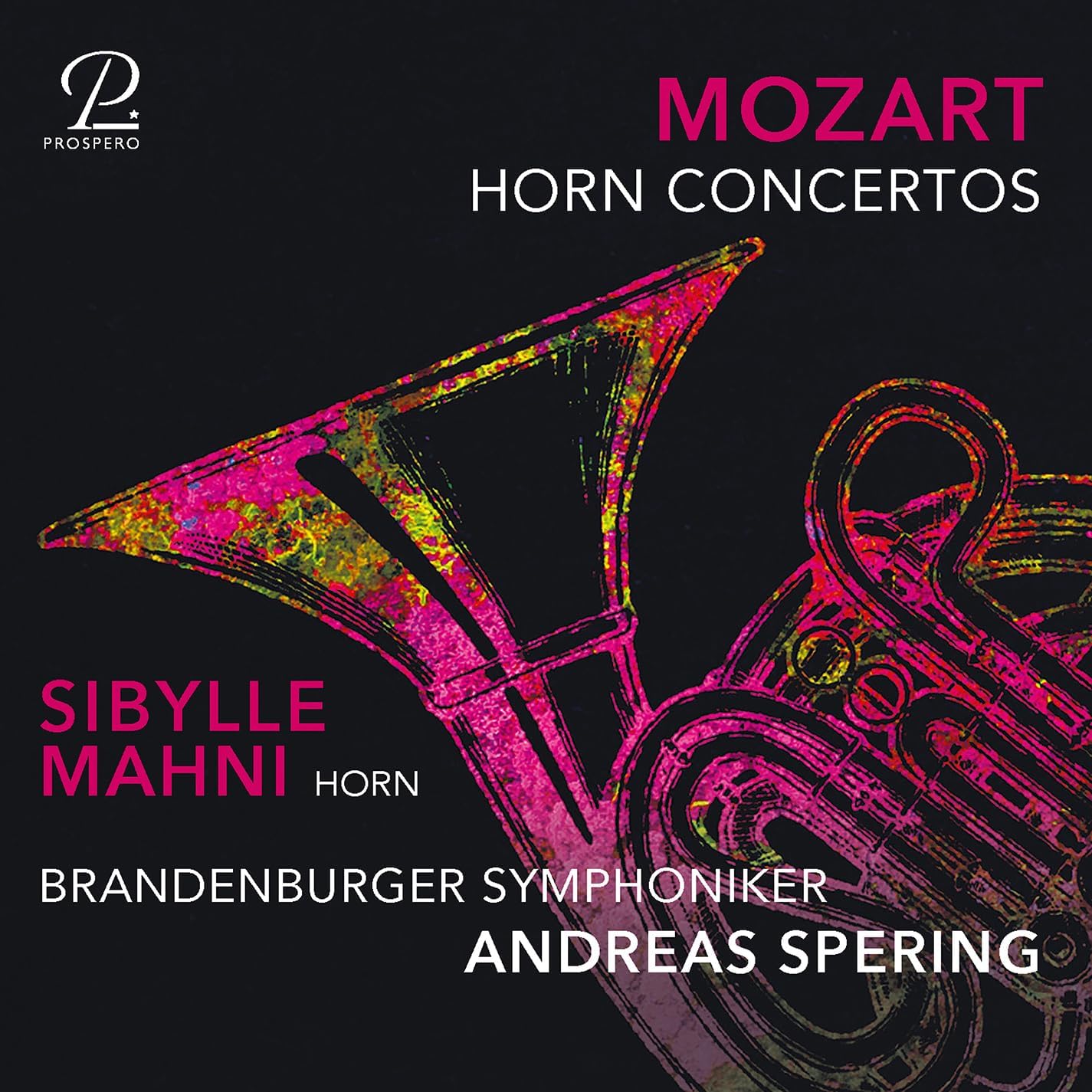 Sibylle Mahni’s disc doesn’t include any quirky interventions but does programme the four established concertos in chronological order. Mahni, like Frank-Gemmill, was a pupil of Marie-Louise Neunecker and her playing is similarly intelligent and graceful. Especially winning are the passages where Mozart’s horn writing anticipates Schumann and Brahms, taking us into the shadows: K417’s glorious C minor second subject is terrific here, Andreas Spering’s nimble Brandenburger Symphoniker gracefully steering us back into daylight. Mahni plays the slow movement straight, but it’s no less affecting, with liquid slurs and effortless dynamic control. K495’s cadenza feels, rightly, as if it’s being improvised on the spot, and the famous finale is infectious.
Sibylle Mahni’s disc doesn’t include any quirky interventions but does programme the four established concertos in chronological order. Mahni, like Frank-Gemmill, was a pupil of Marie-Louise Neunecker and her playing is similarly intelligent and graceful. Especially winning are the passages where Mozart’s horn writing anticipates Schumann and Brahms, taking us into the shadows: K417’s glorious C minor second subject is terrific here, Andreas Spering’s nimble Brandenburger Symphoniker gracefully steering us back into daylight. Mahni plays the slow movement straight, but it’s no less affecting, with liquid slurs and effortless dynamic control. K495’s cadenza feels, rightly, as if it’s being improvised on the spot, and the famous finale is infectious.
K447’s “Allegro” is another delight, Mahni giving the development’s sequence of semibreves (3’07”) dark intensity, the recapitulation offering real relief. K412’s first movement is swift and upbeat; one suspects that Leutgeb would have struggled with the aforementioned semiquaver passage at this tempo. Mahni makes it sound easy, and, like Frank-Gemmill, she plays Mozart’s original finale. Her disc is also very well-recorded. Which one to choose? I’d advise buying both.
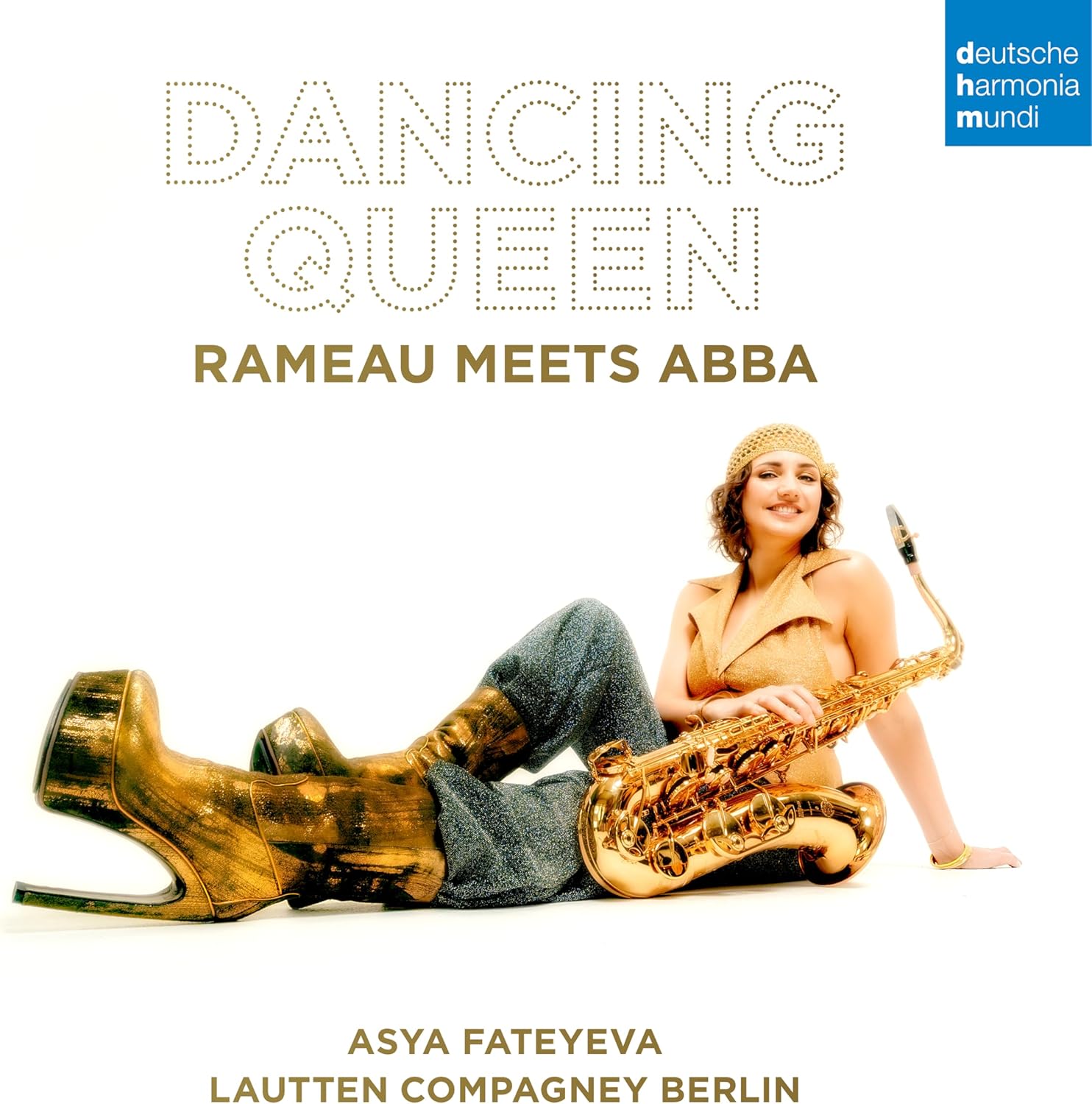 Dancing Queen: Rameau Meets ABBA Asya Fateyeva (saxophone) Lautten Compagney Berlin (Deutche Harmonia Mundi)
Dancing Queen: Rameau Meets ABBA Asya Fateyeva (saxophone) Lautten Compagney Berlin (Deutche Harmonia Mundi)
This year’s prize for unlikely coupling goes to the early music ensemble Lautten Compagney Berlin and saxophonist Asya Fatayeva who have juxtaposed French Baroque master Jean-Philippe Rameau with the songs of Swedish sparkly pop geniuses Benny Andersson and Björn Ulvaeus. The first question has to be: “why?” Well, the booklet admits that, although you could find musical justifications and parallels, the real answer is “because we wanted to.” The message is: chill out, sit back, and enjoy the fun. And fun it certainly is. Bo Wiget’s ABBA arrangements, for a flexible ensemble of about a dozen period players plus the modern sax, are really excellent. They find something dramatic in the songs – especially “Mamma Mia”, which has a harmonic strangeness that takes it into eastern European territory. Sometimes the sax feels an instrument too many, gilding an already highly decorated lily. That said, Asya Fateyeva’s playing is excellent, liquid and well balanced within the mix, where on paper it could threaten to overwhelm (I wonder how different it would sound in live performance?)
The last Rameau I reviewed was a historically-informed and deeply researched recording of his last opera Les Boréades, which presented a lot of Rameau in one go. But, as on this new disc, his music does divide easily into chunks, especially when the focus is on instrumental dances and set pieces. In the Rameau items the sax is again blended sensitively into the ensemble by Bo Wiget in the quieter passages, such as the haunting “La Cupis” or gorgeous “Entrée de Polymnie” from Les Boréades.
The ABBA song choices are fairly obvious, and don’t venture far from the greatest hits playlist. This means that songs like “Thank you for the music” and “Waterloo” are present, even when they don’t really translate, and other, less famous, tracks overlooked, when they might have worked better. But “Take a Chance on Me” is very persuasive, contrapuntal and urgent, and “Lay All Your Love on Me” the most brilliantly transformative, becoming a Bachian chorale-prelude on the song’s chorus. It’s a bit hard to know who the market for this is – although I am walking proof that there is a crossover between fans of ABBA and Rameau, and I know ABBA have always been very popular in Germany in particular. There’s a danger that the novelty aspect masks the inventiveness of the arrangements and the high-quality playing, but also the novelty is the point, the unlikeliness of the pairing throwing up real pleasures. Bernard Hughes
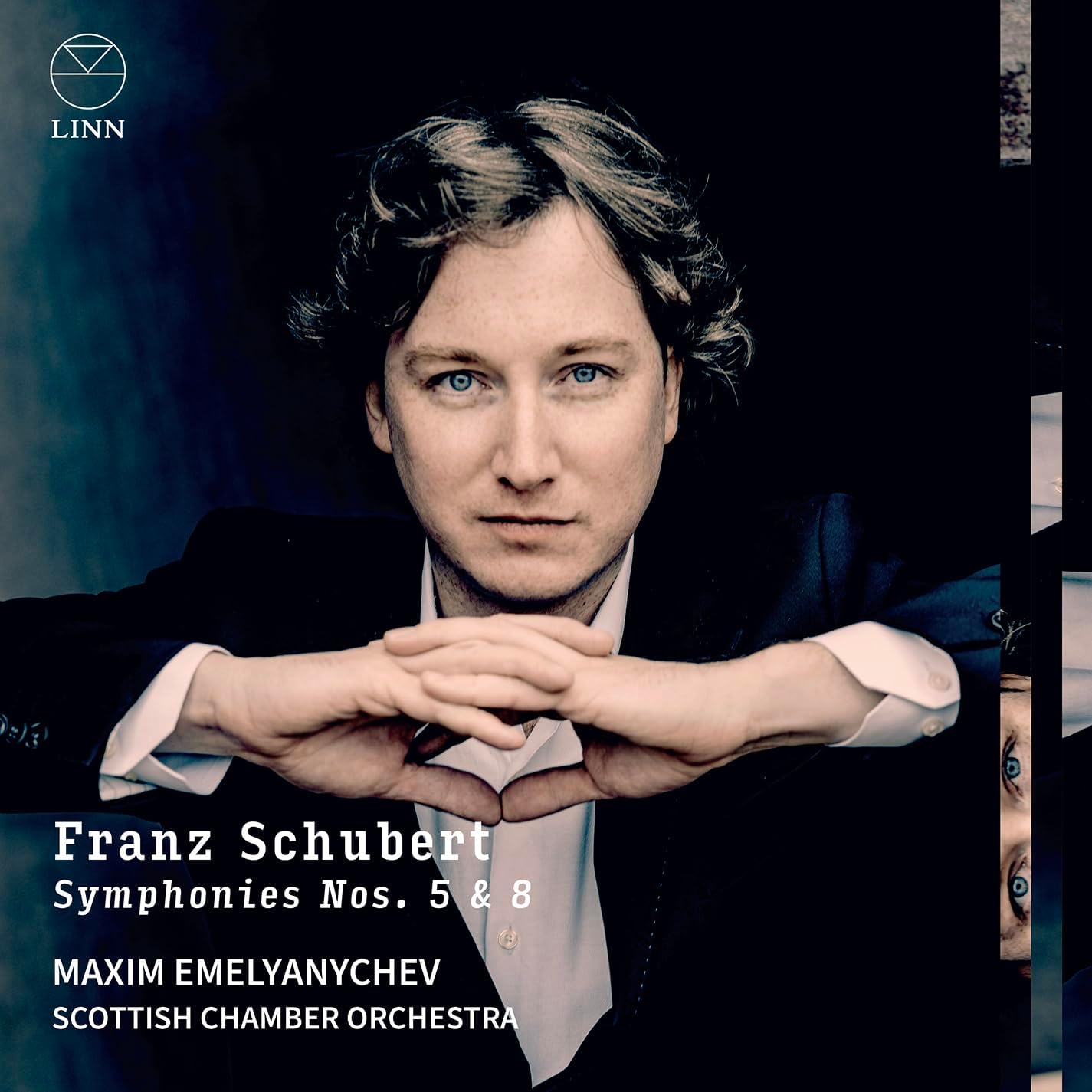 Schubert: Symphonies Nos. 5 & 8 Scottish Chamber Orchestra/Maxim Emelyanychev (Linn)
Schubert: Symphonies Nos. 5 & 8 Scottish Chamber Orchestra/Maxim Emelyanychev (Linn)
I am always up for hearing another Schubert 5 – my favourite of all the symphonies, full stop. I reviewed this same pairing with the “Unfinished” symphony by the Freiburg Barockorchester last year (they follow the new Neue Schubert-Ausgabe numbering that has it as no.7, while the current Linn recording sticks with tradition by calling it no.8). I liked the Freiburg recording, with some caveats about the second and third movements, and I like this new Scottish Chamber Orchestra modern-instrument version maybe a little bit more. Maxim Emelyanychev leads his small forces in a brisk reading – which is how I like it. In particular, the challenge is to keep the second movement moving. Marked “Andante con moto” it isn’t really a slow movement and suffers when treated as such. Emelyanychev gets through it in 9.24, about the same as the excellent Claudio Abbado/Chamber Orchestra of Europe from 1986, but is a whole minute-and-a-half slower than Roger Norrington with the London Classical Players, which remains my own favourite. But Emelyanychev has so much elegance, shaping the phrases exquisitely, finding more and more detail: it’s lovely playing. The “Menuetto” is very brisk indeed – the horns revelling in their moments – and there is no let-up in tempo in the “Trio” – but there is a captivating change of sound and mood, the strings going a bit ponticello and senza vibrato and the whole thing very operatic and Mozartian. The finale is lithe and light-footed, coloured by the skittering flutes. This is very much a recording I will add to my pantheon of Schubert 5s – perhaps second only to the Norrington.
The “Unfinished” never quite hits me in the same way. It has so much loftier ambition and scale (its two movements are the same length as the 5th's four) but perhaps I’m just a miniaturist at heart. This performance is terrific, though. Emelyanychev changes mood at will, and has a convincing way with rubato, allowing the phrases to breathe. It is, once again, a Mozartian reading of a piece that isn’t as obviously Mozartian as the 5th, with a theatrical sweep from moments of intensity (the end of the first movement) to intimacy (the start of the second). The new discovery for on this disc was the Rondo in A major D.438 for solo violin (Stephanie Gonley) and orchestra, which dates from the same year as the fifth symphony. It’s a soloistic showpiece which never tries too hard, and is played by Gonley with sensitivity and wit. It’s charming in the best Schubertian chamber manner and makes you lament the concertos he never wrote. Bernard Hughes
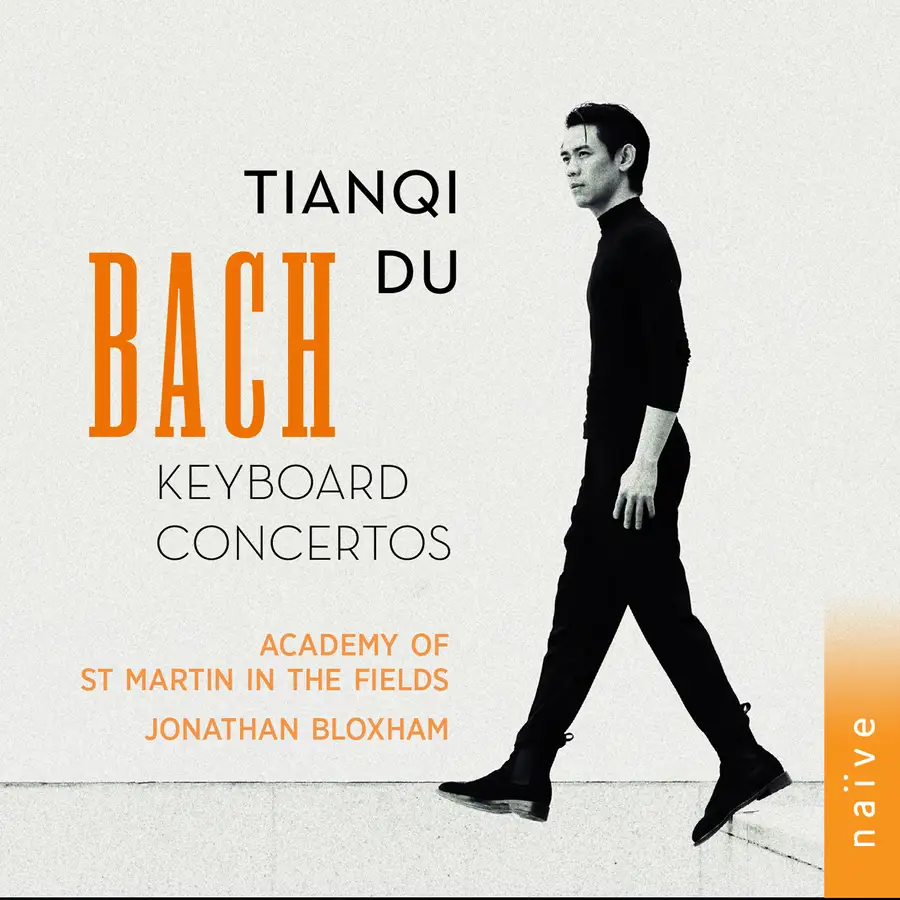 Bach: Keyboard Concertos Tianqi Du (piano), Academy of St Martin in the Fields/Jonathan Bloxham (Naïve)
Bach: Keyboard Concertos Tianqi Du (piano), Academy of St Martin in the Fields/Jonathan Bloxham (Naïve)
Works for Piano and Orchestra: music by Prokofiev, Rimsky-Korsakov and Alexandre Tsfasman Zlata Chochieva, BBC Scottish Symphony Orchestra/Karl-Heinz Steffens (Naïve)
More Bach, Please! Concerto Italiano/Rinaldo Alessandrini (Naïve)
O sole mio – Mandolin concertos and songs Julien Martineau (mandolin), Orchestre National du Capitole de Toulouse/Wilson Ng (Naïve)
It’s been good to see the French Naïve imprint bounce back in recent years, and their gargantuan Vivaldi edition is on track to be one of the great recording projects. I’ll tackle some of those Vivaldi discs later this month; meanwhile, here’s a selection of other recent Naïve releases that have caught my fancy.
Bach’s keyboard concertos can sound gnarly and forbidding on harpsichord; to my ears, this music is more ingratiating on a modern piano, accompanied by a modern chamber orchestra. Tianqi Du’s album contains concertos 1, 3, 4 and 5, warmly accompanied by Jonathan Bloxham’s slimmed-down Academy of St Martin in the Fields. These are beautiful performances: warm, witty and wise. Du sees them as representing “the essence of Bach as a vibrant human being… free from the weighty responsibilities of being a Cantor”. No. 1’s opening is authoritative but never gruff, and the slow movements really sing; No. 3’s “Adagio e piano sempre” is magical. There’s plenty of fun in the faster music too, Du making the music dance. My go-to recording has long-been Murray Perahia’s, made for Sony with the same orchestra, and Du’s disc deserves a place alongside it.
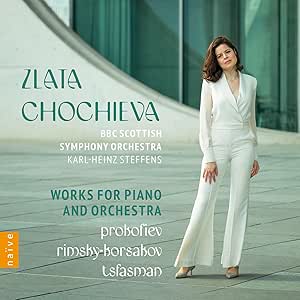 The contents of Zlata Chochieva’s piano concerto disc make it mandatory listening, the big draw for me being a 1945 Jazz Suite by one Alexander Tsfasman. He gave the first Soviet performance of Rhapsody in Blue, and this sequence of four miniatures makes for joyous listening. Tsfasman didn’t possess Gershwin’s melodic gifts, but his energy is infectious; if you like Leroy Anderson, you’ll love this, especially the effervescent final movement. Chochieva’s booklet interview mentions her noticing how much the BBC Scottish Symphony Orchestra players were visibly enjoying themselves during the sessions. You can hear why. In what’s been a fairly grim week, invest in some Tsfasman and cheer yourself up. Another rarity is Rimsky-Korsakov’s delightful Concerto in C-sharp minor, which could become a repertoire piece were it ten minutes longer. The big work here is Prokofiev’s brooding Piano Concerto No. 2. I enjoyed Stewart Goodyear’s recent Orchid Classics recording but Chochieva digs even deeper into the first movement’s huge cadenza, and Karl-Heinz Steffens’ BBC Scottish brass are terrifying when the full orchestra enters near the end of the movement. Magnificent playing and engineering – this is a covetable anthology.
The contents of Zlata Chochieva’s piano concerto disc make it mandatory listening, the big draw for me being a 1945 Jazz Suite by one Alexander Tsfasman. He gave the first Soviet performance of Rhapsody in Blue, and this sequence of four miniatures makes for joyous listening. Tsfasman didn’t possess Gershwin’s melodic gifts, but his energy is infectious; if you like Leroy Anderson, you’ll love this, especially the effervescent final movement. Chochieva’s booklet interview mentions her noticing how much the BBC Scottish Symphony Orchestra players were visibly enjoying themselves during the sessions. You can hear why. In what’s been a fairly grim week, invest in some Tsfasman and cheer yourself up. Another rarity is Rimsky-Korsakov’s delightful Concerto in C-sharp minor, which could become a repertoire piece were it ten minutes longer. The big work here is Prokofiev’s brooding Piano Concerto No. 2. I enjoyed Stewart Goodyear’s recent Orchid Classics recording but Chochieva digs even deeper into the first movement’s huge cadenza, and Karl-Heinz Steffens’ BBC Scottish brass are terrifying when the full orchestra enters near the end of the movement. Magnificent playing and engineering – this is a covetable anthology.
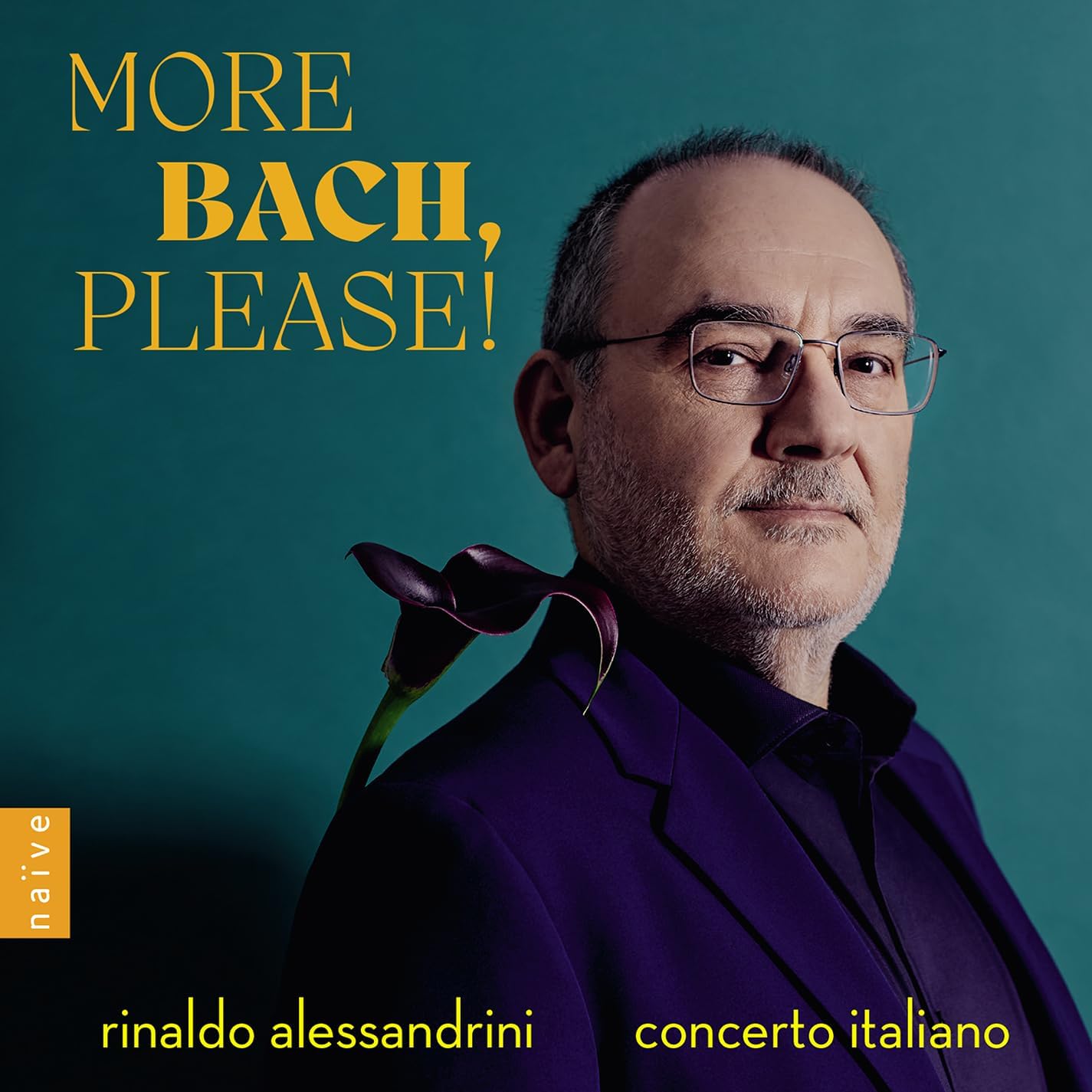 Rinaldo Alessandrini’s More Bach, Please! gives us, er, more Bach, in the form of skilful orchestral transcriptions of Bach instrumental pieces, beautifully played by Alessandrini’s Concerto Italiano. In his words, “a learning effort combined with the fun that comes from creatively manipulating a text”, a description that underplays just how delicious the results are. We get the eight-movement Overture in the French Style, BWV 831 – listen blind and you’d swear that you were hearing a recently discovered Bach orchestral suite. The playing is magnificent, with some lovely burbling winds in the “Passepied II” and exquisite strings in the “Sarabande”. The two other pieces on the are assembled from different sources, Alessandrini again modelling the arrangements on authentic Bach orchestral works. A five-movement Partita in D opens with a delectable baroque flute solo (played by Laura Pontecorvo), taken from the BWV sonata for harpsichord and violin, Naïve’s tracklisting providing details of each section’s source material so it’s possible to compare the rewrites with the originals. The “Gigue” from the 6th French Suite sounds wonderful on flute and strings. We also get a delicious multi-movement Overture in G, scored for strings and assembled from keyboard pieces. A lovely collection.
Rinaldo Alessandrini’s More Bach, Please! gives us, er, more Bach, in the form of skilful orchestral transcriptions of Bach instrumental pieces, beautifully played by Alessandrini’s Concerto Italiano. In his words, “a learning effort combined with the fun that comes from creatively manipulating a text”, a description that underplays just how delicious the results are. We get the eight-movement Overture in the French Style, BWV 831 – listen blind and you’d swear that you were hearing a recently discovered Bach orchestral suite. The playing is magnificent, with some lovely burbling winds in the “Passepied II” and exquisite strings in the “Sarabande”. The two other pieces on the are assembled from different sources, Alessandrini again modelling the arrangements on authentic Bach orchestral works. A five-movement Partita in D opens with a delectable baroque flute solo (played by Laura Pontecorvo), taken from the BWV sonata for harpsichord and violin, Naïve’s tracklisting providing details of each section’s source material so it’s possible to compare the rewrites with the originals. The “Gigue” from the 6th French Suite sounds wonderful on flute and strings. We also get a delicious multi-movement Overture in G, scored for strings and assembled from keyboard pieces. A lovely collection.
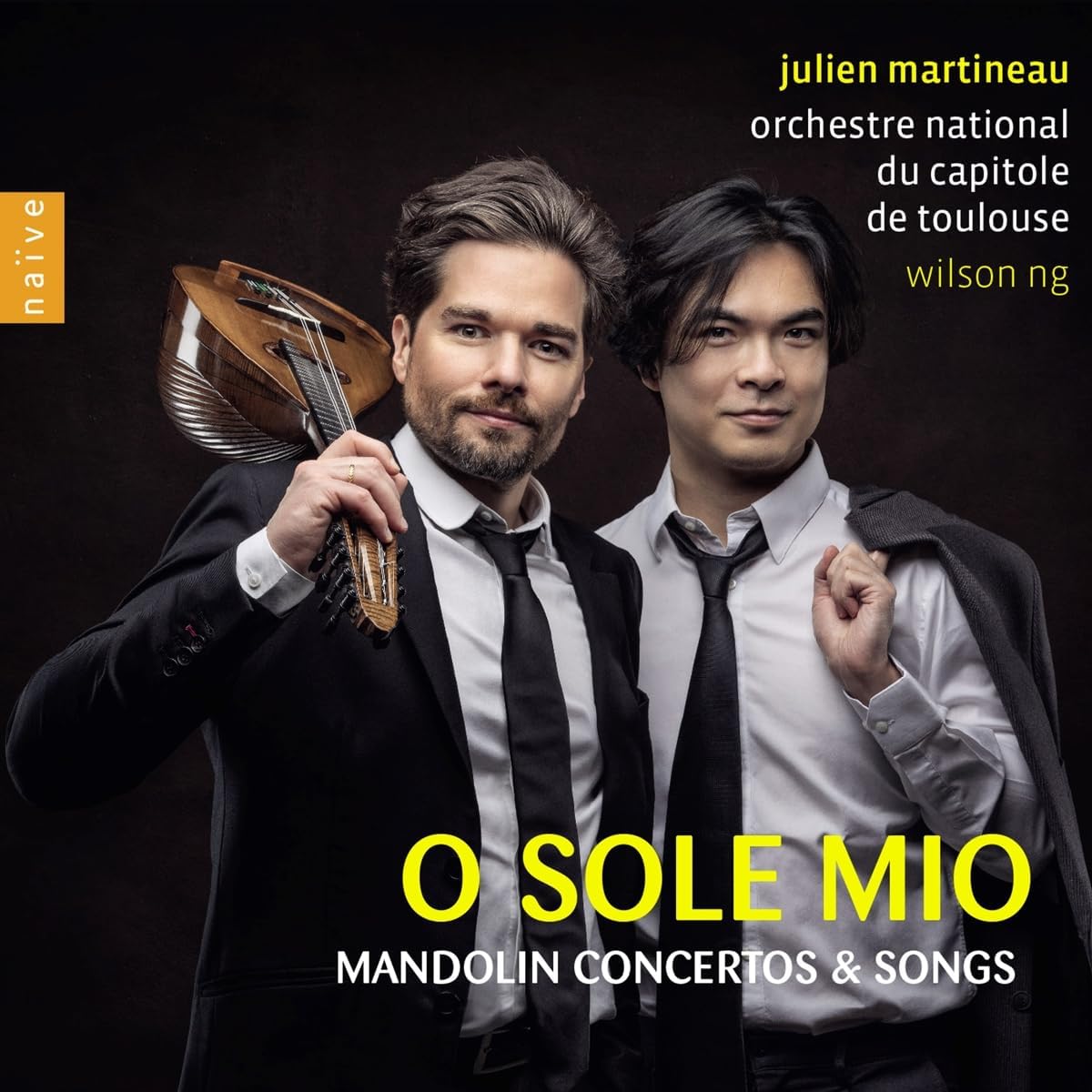 Equally entertaining is O sole mio, a showcase for French mandolin virtuoso Julien Martineau taking in repertoire from Vivaldi to Raffaele Calace (1863-1934), an Italian mandolinist who found time during a busy playing career to compose more than 200 works for the instrument. His Concerto No. 1 for Mandolin and Piano is heard here in a sympathetic orchestral transcription made by Thibault Perrine, and it’s a delightful three-movement work with a soulful slow movement. Hearing a mandolin with other instruments is a real novelty, and it’s fun to compare Calace’s piece with Hummel’s 1799 Concerto in G. Listen blind to the opening tutti and you expect a solo piano to enter, and its difficult not to grin when Martineau steals in instead, he and Hummel gleefully demonstrating just what a skilled mandolinist can do. This isn’t earth-shattering music, but it’s deeply lovable. As is a concerto for two mandolins by Vivaldi, Martineau joined by Anna Schivazappa. Guitarist Philippe Mouratoglu joins him in a pair of tiny duets by Paganini, followed by Eric Francerie’s transcription of “Deh, vieni alla finestra” from Don Giovanni for mandolin, guitar and double bass, sweetly sung by baritone Florian Sempey, who also throws in two Neapolitan popular songs. Enormous fun, and beautifully recorded, Martineau always audible.
Equally entertaining is O sole mio, a showcase for French mandolin virtuoso Julien Martineau taking in repertoire from Vivaldi to Raffaele Calace (1863-1934), an Italian mandolinist who found time during a busy playing career to compose more than 200 works for the instrument. His Concerto No. 1 for Mandolin and Piano is heard here in a sympathetic orchestral transcription made by Thibault Perrine, and it’s a delightful three-movement work with a soulful slow movement. Hearing a mandolin with other instruments is a real novelty, and it’s fun to compare Calace’s piece with Hummel’s 1799 Concerto in G. Listen blind to the opening tutti and you expect a solo piano to enter, and its difficult not to grin when Martineau steals in instead, he and Hummel gleefully demonstrating just what a skilled mandolinist can do. This isn’t earth-shattering music, but it’s deeply lovable. As is a concerto for two mandolins by Vivaldi, Martineau joined by Anna Schivazappa. Guitarist Philippe Mouratoglu joins him in a pair of tiny duets by Paganini, followed by Eric Francerie’s transcription of “Deh, vieni alla finestra” from Don Giovanni for mandolin, guitar and double bass, sweetly sung by baritone Florian Sempey, who also throws in two Neapolitan popular songs. Enormous fun, and beautifully recorded, Martineau always audible.
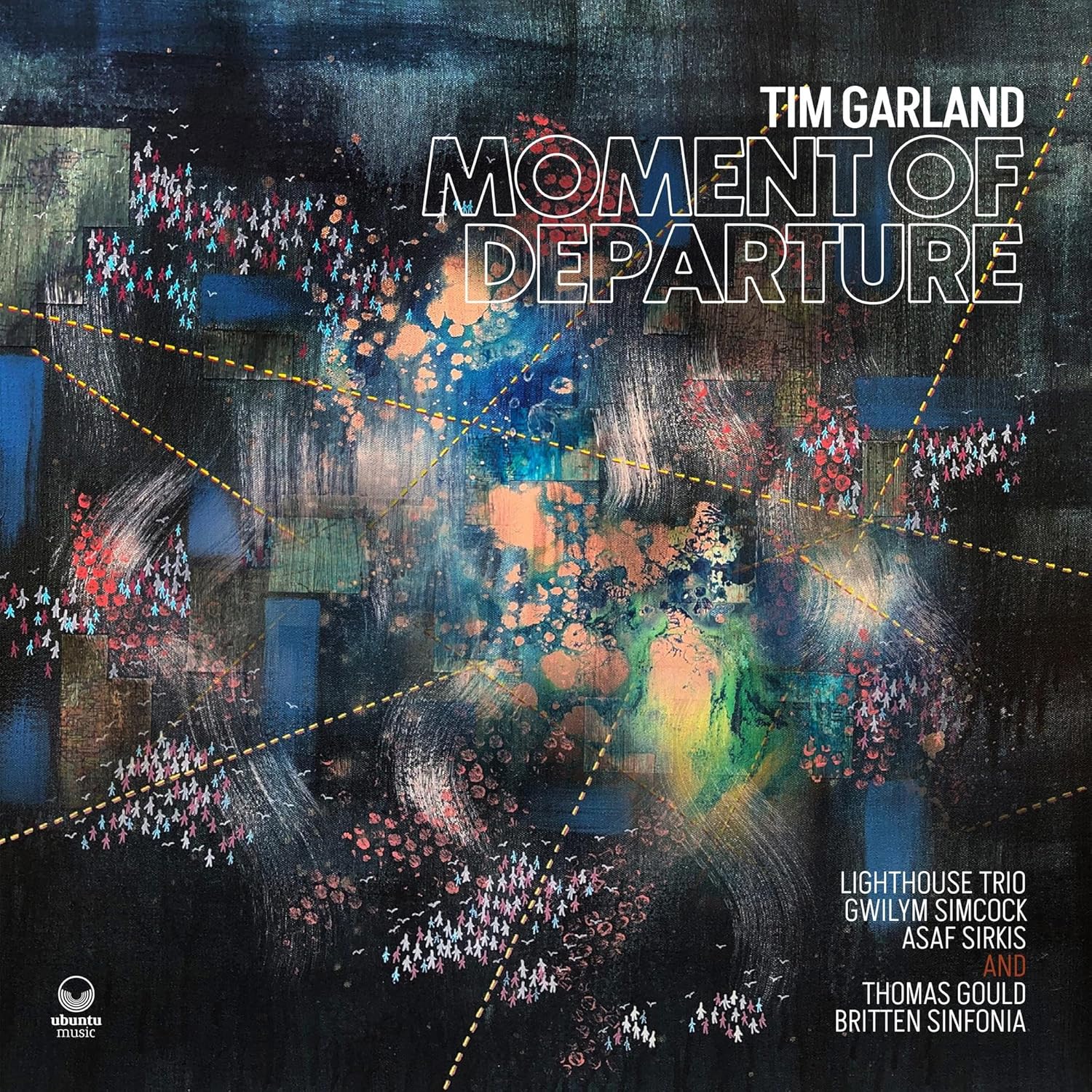 Tim Garland: Moment of Departure (Ubuntu Music)
Tim Garland: Moment of Departure (Ubuntu Music)
Asha Parkinson: Possession (Ubuntu Music)
I ummed and ahhed about reviewing this pair of albums from jazz imprint Ubuntu Music, but there are plenty of reasons for covering them in a classical column. Saxophonist Tim Garland was a Fellow in Composition at Newcastle University, and his double-album Moment of Departure includes contributions from Thomas Gould and the Britten Sinfonia. This is an album of two halves: one disc accentuating improvisatory freedom, the other concerned with “the supplementation and variation of written compositions”. Garland’s Lighthouse Trio do much of the heavy lifting, Garland joined by pianist Gwilym Simcock and percussionist Asaf Sirkis. The titular moment of departure was suggested by a photograph of a base jumper stepping off a cliff edge – an apt metaphor for improvisation, where there’s no going back and thinking on one’s feet is a non-negotiable. Yazz Ahmed’s flugelhorn solo on “Sub Vita” is a high spot, though the first disc’s high point is probably the title track, the Britten Sinfonia’s strings adding a noirish sheen to the trio’s playing. Disc 2 opens with a witty recasting of “Winter” from Vivaldi’s Four Seasons, Garland’s soprano saxophone sparring with Gould to exciting effect. Garland conducts but doesn’t play in his five-movement suite The Forever Seed, a large-scale concertante work for solo violin and strings. Gould is on superb form, and do listen out for Rob Millett’s cimbalon. Garland and the Britten Sinfonia have several concerts in the coming weeks, including appearances in Poole, Rochester and London’s Milton Court.
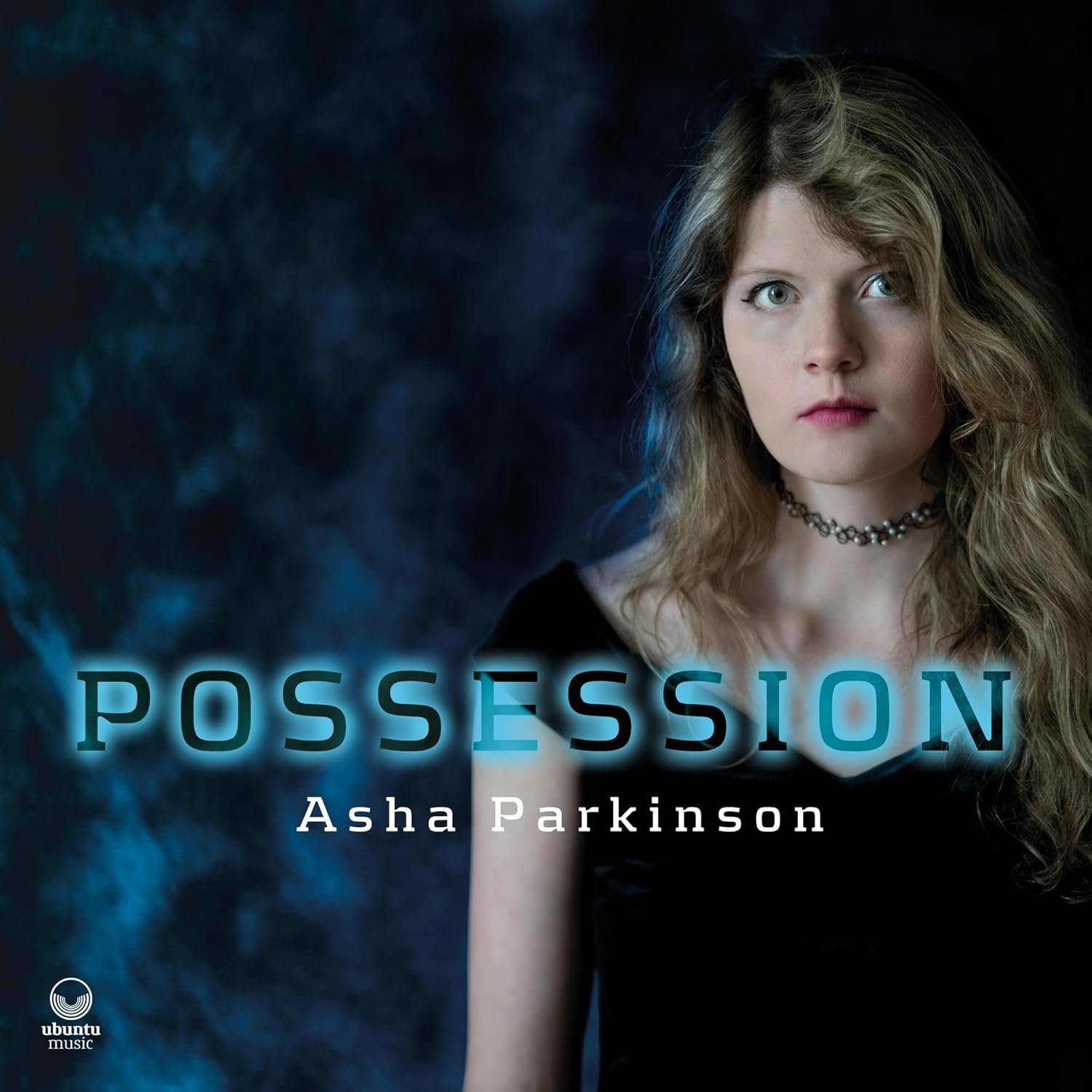 Saxophonist and Guildhall alumnus Asha Parkinson’s Possession is more eclectic and trickier to classify, Parkinson leading her 14-piece group Kalpadruma through a collection of nine short pieces, six of them featuring vocalist Rebecka Edlund. Described as “a filmic global exploration, the disc evokes, variously, London streets, Tolstoy heroines and a Czech folk tale, Edlund in the title track offering a lover “access to my security codes”, wanting them to “hack my system and own my soul”. Parkinson’s restless, densely-scored music nicely conveys the narrator’s obsession, much as “Urban Fantasy” describes a city which never sleeps. Listen to a track like “There” and marvel at the sounds Parkinson draws from her ensemble, a string quartet and a Middle Eastern qanun (look it up!) deployed with rare subtlety and skill. The closer, “Permanent Verse” makes brilliant use of a speech by Liberian activist and campaigner Leymah Gbowee, urging us to use anger as a constructive force for good. Parkinson’s music stops abruptly without an easy resolution, a fitting close for a punchy, ear-stretching disc. If you’re curious to hear more, catch her and Kalpadruma playing in Oxford later this month.
Saxophonist and Guildhall alumnus Asha Parkinson’s Possession is more eclectic and trickier to classify, Parkinson leading her 14-piece group Kalpadruma through a collection of nine short pieces, six of them featuring vocalist Rebecka Edlund. Described as “a filmic global exploration, the disc evokes, variously, London streets, Tolstoy heroines and a Czech folk tale, Edlund in the title track offering a lover “access to my security codes”, wanting them to “hack my system and own my soul”. Parkinson’s restless, densely-scored music nicely conveys the narrator’s obsession, much as “Urban Fantasy” describes a city which never sleeps. Listen to a track like “There” and marvel at the sounds Parkinson draws from her ensemble, a string quartet and a Middle Eastern qanun (look it up!) deployed with rare subtlety and skill. The closer, “Permanent Verse” makes brilliant use of a speech by Liberian activist and campaigner Leymah Gbowee, urging us to use anger as a constructive force for good. Parkinson’s music stops abruptly without an easy resolution, a fitting close for a punchy, ear-stretching disc. If you’re curious to hear more, catch her and Kalpadruma playing in Oxford later this month.
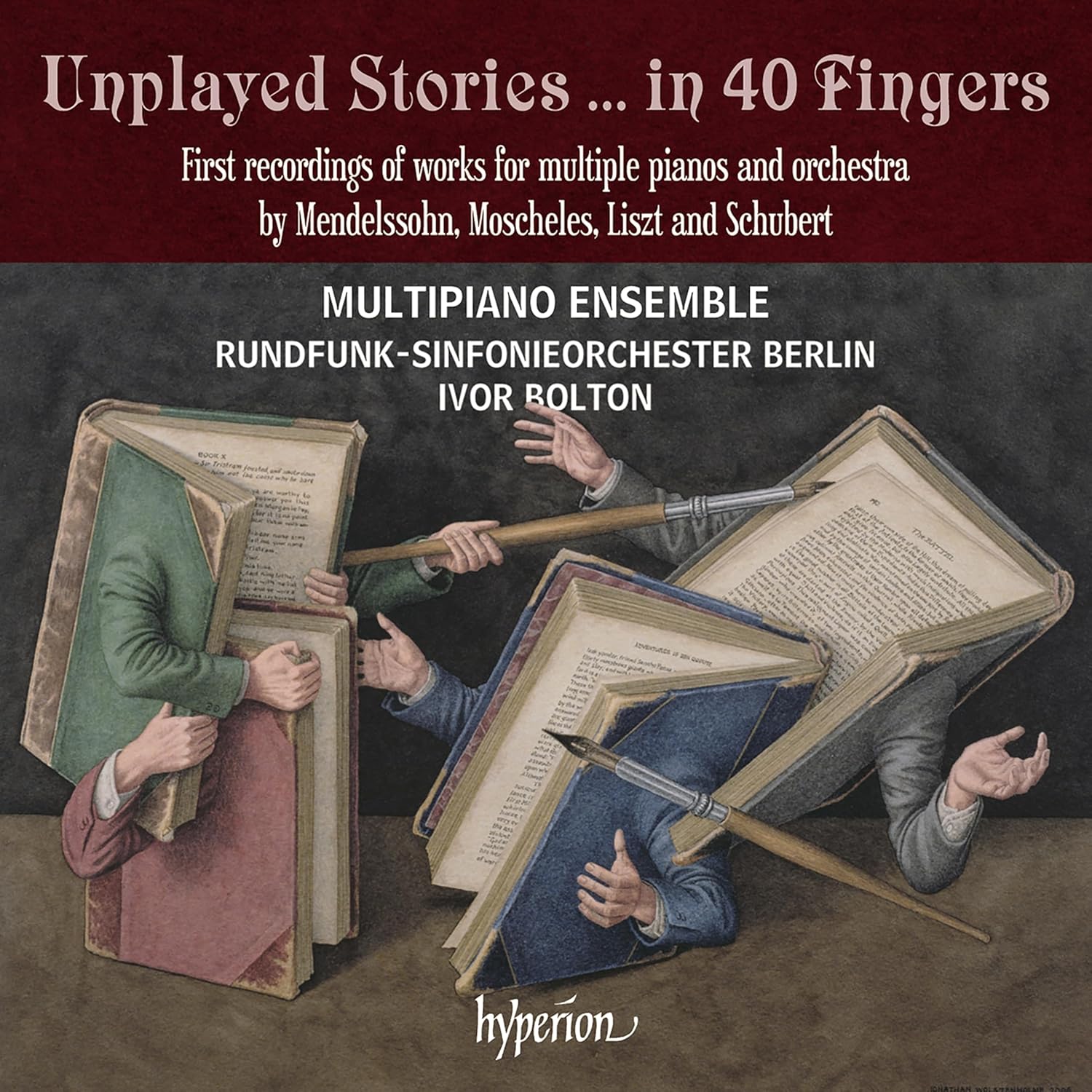 Unplayed Stories… in 40 Fingers MultiPiano Ensemble, Rundfunk-Sinfonieorchester Berlin/ Ivor Bolton (Hyperion)
Unplayed Stories… in 40 Fingers MultiPiano Ensemble, Rundfunk-Sinfonieorchester Berlin/ Ivor Bolton (Hyperion)
I’ve always been a fan of music for arranged for multiple pianos, recent discoveries in that realm including Adams’ Short Ride in a Fast Machine, Stravinsky’s Dumbarton Oaks and Rachmaninov’s Symphonic Dances, all working perhaps surprisingly well. But this album takes things to further extremes, with previously largely overlooked 19th century works arranged for up to eight hands on two pianos, most of them with orchestral accompaniment. There is something thrilling about the textures that emerge, and the challenges of co-ordination that are thrown up, on this thoroughly enjoyable compendium of first recordings.
The first piece has the most complex and labyrinthine history: Felix Mendelssohn and his teacher Ignaz Moscheles co-wrote the Fantaisie and Variations on a Theme of Weber for a charity event in England in 1833. The score was soon lost and only re-surfaced in St Petersburg in the 21st century. It’s a very high-spirited romp in variation form, with the composers writing alternate variations, leading to a finale – probably by Mendelssohn – that demonstrates virtuosic display by composer and players alike. Alon Kariv and Tomer Lev of the MultiPiano Ensemble, who re-introduced the piece to the world, are great advocates for this unusual collaborative piece. The next work has half the number of composers, but twice the number of pianists: Les Contrastes “Grand Duo” by Moscheles, this time working alone. It was originally for pianos without orchestra, but this version (by Tomer Lev and Aryeh Levanon) allows the piano parts to be thinned out and re-distributed. There are still dense moments in this Baroque inspired suite, such as the fugal second movement, but the best bits are in the light-as-a-feather finale.
Liszt’s expansion of Schubert’s “Wanderer” Fantasy for piano and orchestra, which did much to keep the music of Schubert in the public ear into the later 19th century, was further developed in the 20th century by Alexander Tamir, who uses two pianos to better balance with the orchestra. This is the biggest piece on the disc, not just in duration but scope. It’s a big beast, played with authority and adventure by Tomer Lev and Berenika Glixman. They capture the melodic eloquence of Schubert and the “look-at-me” show-offiness of Liszt, with Ivor Bolton and the Rundfunk-Sinfonieorchester Berlin negotiating the intricate orchestral part with little fuss.
After which there is just time for a pair of Schubert Grandes Marches, written by him for regular piano duet and later expanded for eight hands by Ernst Pauer. Knocked off, I’m sure, by Schubert in a couple of hours, they are effortlessly entertaining (and sound really fun to play) without seeking the profundity of the fantasy. The march D.819 is a great finale, wearing its harmonic cleverness lightly, and played with startlingly good ensemble by the players of MultiPiano. It has led me to discover their earlier album of Mozart’s multi-player concertos, which is also recommended. Bernard Hughes
- More classical reviews on theartsdesk
Share this article
The future of Arts Journalism
You can stop theartsdesk.com closing!
We urgently need financing to survive. Our fundraising drive has thus far raised £49,000 but we need to reach £100,000 or we will be forced to close. Please contribute here: https://gofund.me/c3f6033d
And if you can forward this information to anyone who might assist, we’d be grateful.

Subscribe to theartsdesk.com
Thank you for continuing to read our work on theartsdesk.com. For unlimited access to every article in its entirety, including our archive of more than 15,000 pieces, we're asking for £5 per month or £40 per year. We feel it's a very good deal, and hope you do too.
To take a subscription now simply click here.
And if you're looking for that extra gift for a friend or family member, why not treat them to a theartsdesk.com gift subscription?
more Classical music
 Bizet in 150th anniversary year: rich and rare French offerings from Palazzetto Bru Zane
Specialists in French romantic music unveil a treasure trove both live and on disc
Bizet in 150th anniversary year: rich and rare French offerings from Palazzetto Bru Zane
Specialists in French romantic music unveil a treasure trove both live and on disc
 Scottish Chamber Orchestra, Ibragimova, Queen’s Hall, Edinburgh review - rarities, novelties and drumrolls
A pity the SCO didn't pick a better showcase for a shining guest artist
Scottish Chamber Orchestra, Ibragimova, Queen’s Hall, Edinburgh review - rarities, novelties and drumrolls
A pity the SCO didn't pick a better showcase for a shining guest artist
 Kilsby, Parkes, Sinfonia of London, Wilson, Barbican review - string things zing and sing in expert hands
British masterpieces for strings plus other-worldly tenor and horn - and a muscular rarity
Kilsby, Parkes, Sinfonia of London, Wilson, Barbican review - string things zing and sing in expert hands
British masterpieces for strings plus other-worldly tenor and horn - and a muscular rarity
 From Historical to Hip-Hop, Classically Black Music Festival, Kings Place review - a cluster of impressive stars for the future
From quasi-Mozartian elegance to the gritty humour of a kitchen inspection
From Historical to Hip-Hop, Classically Black Music Festival, Kings Place review - a cluster of impressive stars for the future
From quasi-Mozartian elegance to the gritty humour of a kitchen inspection
 Shibe, LSO, Adès, Barbican review - gaudy and glorious new music alongside serene Sibelius
Adès’s passion makes persuasive case for the music he loves, both new and old
Shibe, LSO, Adès, Barbican review - gaudy and glorious new music alongside serene Sibelius
Adès’s passion makes persuasive case for the music he loves, both new and old
 Anja Mittermüller, Richard Fu, Wigmore Hall review - a glorious hall debut
The Austrian mezzo shines - at the age of 22
Anja Mittermüller, Richard Fu, Wigmore Hall review - a glorious hall debut
The Austrian mezzo shines - at the age of 22
 First Person: clarinettist Oliver Pashley on the new horizons of The Hermes Experiment's latest album
Compositions by members of this unusual quartet feature for the first time
First Person: clarinettist Oliver Pashley on the new horizons of The Hermes Experiment's latest album
Compositions by members of this unusual quartet feature for the first time
 Gesualdo Passione, Les Arts Florissants, Amala Dior Company, Barbican review - inspired collaboration excavates the music's humanity
At times it was like watching an anarchic religious procession
Gesualdo Passione, Les Arts Florissants, Amala Dior Company, Barbican review - inspired collaboration excavates the music's humanity
At times it was like watching an anarchic religious procession
 Classical CDs: Camels, concrete and cabaret
An influential American composer's 90th birthday box, plus British piano concertos and a father-and-son duo
Classical CDs: Camels, concrete and cabaret
An influential American composer's 90th birthday box, plus British piano concertos and a father-and-son duo
 Cockerham, Manchester Camerata, Sheen, Martin Harris Centre, Manchester review - re-enacting the dawn of modernism
Two UK premieres added to three miniatures from a seminal event of January 1914
Cockerham, Manchester Camerata, Sheen, Martin Harris Centre, Manchester review - re-enacting the dawn of modernism
Two UK premieres added to three miniatures from a seminal event of January 1914
 Kempf, Brno Philharmonic, Davies, Bridgewater Hall, Manchester review - European tradition meets American jazz
Bouncing Czechs enjoy their Gershwin and Brubeck alongside Janáček and Dvořák
Kempf, Brno Philharmonic, Davies, Bridgewater Hall, Manchester review - European tradition meets American jazz
Bouncing Czechs enjoy their Gershwin and Brubeck alongside Janáček and Dvořák
 Solomon, OAE, Butt, QEH review - daft Biblical whitewashing with great choruses
Even a top soprano and mezzo can’t make this Handel paean wholly convincing
Solomon, OAE, Butt, QEH review - daft Biblical whitewashing with great choruses
Even a top soprano and mezzo can’t make this Handel paean wholly convincing

Add comment